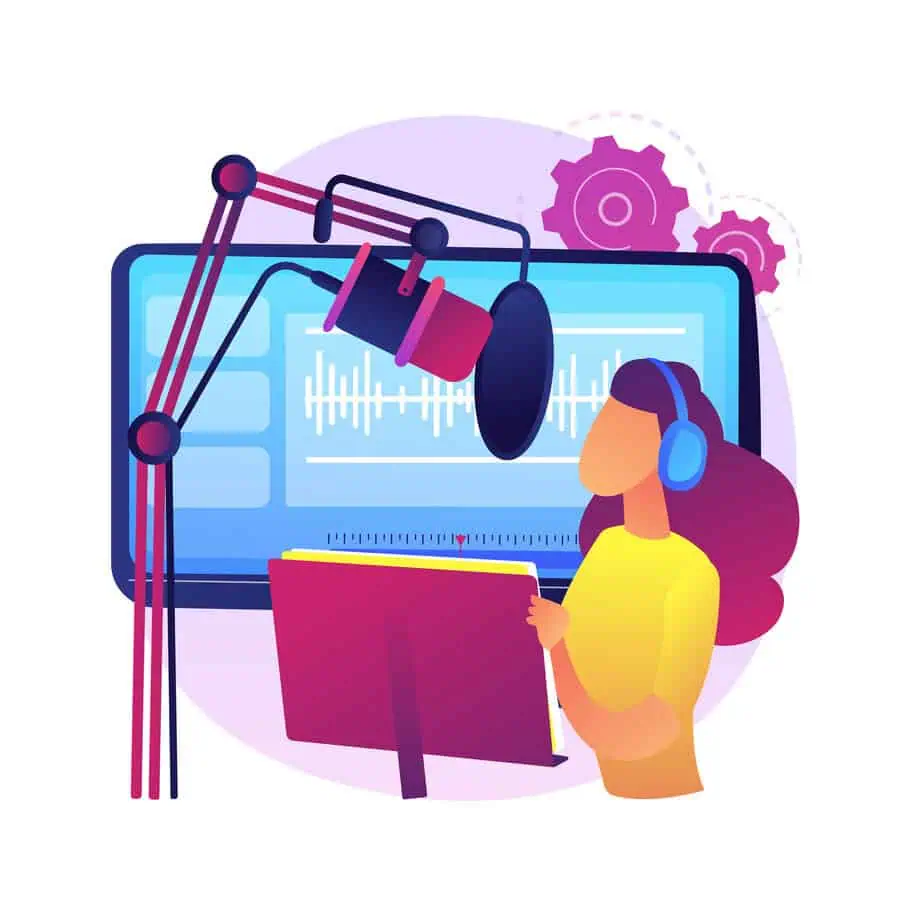What Is Self-Publishing? A Beginner’s Guide

Self-publishing has revolutionized the traditional book industry, putting the reins back in the hands of writers. Unlike the traditional route, where acceptance can feel like a distant dream, self-publishing offers a direct path to turning your ideas into reality. It’s a world where writers have the power to transform their creativity into printed gold, without the need for years of patience or countless rejection letters.
What’s fueled this change? Technology, mostly. The internet has made it easier for authors to connect directly with their readers. Platforms like Amazon Kindle Direct Publishing and others have streamlined the entire process. This digital revolution has redefined author independence. With more ways to publish, authors are reclaiming their pen and pad, taking creative control over their works from start to finish.
So why are more authors jumping ship from traditional publishing? For starters, it’s all about freedom. Self-publishing offers a level of creative control hard to find elsewhere. Writers make the big decisions: story, cover design, and pricing. But perhaps the most significant decision is the marketing strategy. This means fewer compromises and more staying true to your vision, and it also means you have the power to promote your work to your target audience.
There’s another big thing to love: speed. While traditional publishing could put your work on hold for ages, self-publishing cuts through the clutter. Once your book’s polished and ready, it can hit the shelves quickly, sometimes in just days. This is a game-changer for anyone who wants their stories out in the world without a lengthy wait.
And then, there’s the financial aspect. Many find the potential earnings from self-publishing appealing—it can mean a larger share of the royalty pie. As a self-publisher, you have the opportunity to earn a higher percentage of your book’s sales compared to traditional routes. This not only fills your pockets but also validates the hard work and passion you’ve poured into your project.
Why Self-Publishing Appeals to Aspiring Authors
Aspiring authors often find self-publishing attractive because it celebrates creativity and offers unparalleled flexibility. You don’t just write your book; you become the architect of its destiny. Every decision, from the storyline to the font on the cover, is yours. This creative freedom is what draws many to self-publishing.
Timing is everything, right? With self-publishing, the power lies in your hands to decide your schedule. Traditional publishing can make time crawl with its long processes, but self-publishing lets you control when your work sees the light of day. Whether it’s a holiday-themed novella you want out before Christmas or a gripping summer read, the timing is yours to perfect.
Earnings matter too, and self-publishing can be financially rewarding. Traditional publishing often means your earnings dwindle after the publisher, agents, and retailers take their cut. Self-publishing flips this script, usually letting you keep a bigger share of the sales. Keeping more of what you earn doesn’t just benefit your wallet—it reinforces the value of your work.
For many, the thrill of learning multiple facets of the book business is another big draw. Beyond writing, self-publishing involves marketing, graphic design, and sales strategy. It’s an all-encompassing experience that equips you with industry insights, adding more skills to your writer’s toolkit. The learning opportunities in self-publishing are endless, making it an exciting journey for aspiring authors.
There’s no denying that going solo has its challenges, but the rewards can be plentiful. Taking control of your publishing journey means embracing the ups and downs, but forging your path makes every achieved milestone much sweeter. As an author, you’re not bound by anyone else’s rules; your story, your way, is the ultimate payoff.
Navigating the Landscape of Self-Publishing Platforms
Tackling self-publishing starts with choosing the right platform, and trust me, it’s a vibrant ecosystem out there. Amazon Kindle Direct Publishing (KDP) is a crowd favorite thanks to its massive reach and ease of use. With KDP, your book could be accessed by millions of readers worldwide overnight. Its simplicity and extensive distribution make it a go-to for many.
Then there’s IngramSpark, a solid choice if you dream big about getting your book into physical bookstores and libraries. It focuses on quality and broad distribution and even handles both print and e-books. This flexibility is enticing for those who want to be present in both the digital and physical worlds.
Exploring platforms like Smashwords or Draft2Digital might also be worthwhile for those keen on maximizing digital distribution. They offer easy access to multiple online retailers all at once. No need to juggle dozens of accounts—these services simplify the logistical puzzle by doing the legwork for you.
Picking a platform requires some intuition about where your audience hangs out. Is your book best suited for Amazon’s global audience, or would you prefer the diverse reach of multiple digital retailers? Research each platform’s strengths, evaluate how they align with your goals, and go where your readers are.
Most platforms also provide a wealth of resources to help you succeed. From formatting guides to marketing advice, a ton of help is available to ensure that your book looks professional and finds its way into readers’ hands. Whenever in doubt, explore these resources, tap into forums, and connect with other authors. Their insights can be invaluable as you embark on your publishing journey.
Steps to Successfully Self-Publish Your First Book
Preparing your book for self-publishing starts with polishing your manuscript until it shines. Editing isn’t just about catching typos; it’s about refining your voice, enhancing flow, and ensuring your message hits home. This step is crucial whether you go solo or bring in a professional editor.
Next on the agenda is cover design. People judge books by their covers, so making yours eye-catching and genre-appropriate is key. Whether you go DIY with graphic design software or hire a pro, create something that truly represents your work and appeals to your target readers.
ISBNs, or International Standard Book Numbers, might sound like alphabet soup, but they’re vital if you want your book to be easily found and sold globally. These unique identifiers are assigned to each edition and variation of a book, making it easier for readers and retailers to locate and purchase your work. Some authors skip this step, but investing in an ISBN can boost your book’s credibility and distribution options—worth considering for serious authors.
To learn more about ISBN’s click HERE to read my blog post about them.
Don’t forget formatting. Well-formatted books make for a smooth reading experience in print or digital form. Different platforms might have specific requirements, so check those guidelines carefully.
As you near the finish line, step into the world of distribution. This involves uploading your book to your chosen platform, setting a fair price, and making it available for purchase. Once your book is live, it’s important to promote it to potential readers through various marketing channels. The feeling of seeing your masterpiece available for purchase is unmatched. This is your moment.
Patience is a virtue here, because once live, the marketing game begins. Engage strategically with readers, use platforms effectively, and watch your audience grow. Every download, review, and reader is a milestone in your journey as an author.
To learn more about the process to publish your first book, click HERE to read my blog post about it.
The Costs Associated with Self-Publishing
Venturing into self-publishing comes with its own set of costs, and it’s smart to know what you’re in for. While many think it’s a free route, certain expenses can sneak up on you if you aren’t careful.
Editing and proofreading are often the first to hit your budget. Investing in professional editors can make a world of difference in your book’s quality. There’s something powerful in having a fresh set of eyes to catch things you might’ve missed.
Next up is cover design. A professional cover can draw readers in, making it a worthy investment. Creating your own is an option, but a little extra spent here can pay off big time in book sales.
Marketing is another area where costs can add up, but smart spending can really elevate your book’s visibility. The budget here can vary, from social media campaigns to paid ads on major platforms. Still, it’s an investment in getting your book noticed.
Budgeting for these and other elements, like formatting and ISBNs, is crucial. Every dollar counts for first-time authors, so planning and setting priorities help manage finances effectively.
Seek out budget-friendly tools and services. There’s a host of free or low-cost software for designing covers, formatting, and editing. It’s about finding solutions that offer value without cutting too deep into your wallet. Whether testing free trials or engaging with communities for beta readers, resourcefulness can minimize costs.
Knowing the costs upfront lets you approach self-publishing with clarity and confidence. It’s about making strategic choices that ensure your book not only comes together but also successfully reaches its audience.
To learn more about the costs of self-publishing and how to budget for it, please click HERE to read my blog post about it.
Marketing Your Self-Published Book to Reach a Global Audience
Self-publishing is only half the game; the other half is getting your book noticed in a crowded marketplace. Effective marketing starts with defining your audience and crafting a message that resonates. Showcasing what makes your book unique is crucial in standing out.
Social media isn’t just for selfies and pet pics—it’s a powerful tool for authors. When used strategically, platforms like Instagram, Twitter, and Facebook can amplify your reach. Sharing snippets, behind-the-scenes content, and engaging with readers makes publicity less about selling and more about connection.
Blogs and book tours remain evergreen tactics. Guest posting on relevant blogs can expose your book to broader audiences, while organizing virtual or physical book tours broadens your reach even further. Collaborating with other authors or influencers in your genre is another innovative way to get in front of new eyes.
Building a small community of enthusiastic readers can be more beneficial than chasing big numbers. Encouraging reviews and word-of-mouth recommendations turn readers into advocates, multiplying your book’s reach beyond what any ad spend could achieve.
Analyzing what’s working and what isn’t is vital. Tools like Google Analytics or social media insights give data on reader engagement, helping you refine your strategies over time. Adaptability and willingness to pivot are your best friends in marketing.
Remember, marketing is not just about immediate sales; it’s about creating long-term relationships with readers. A well-executed marketing plan doesn’t just sell your books; it bolsters your author brand, setting you up for future successes.
Conclusion
Stepping into the world of self-publishing is more than just a career move—it’s a bold declaration of creative freedom and entrepreneurial spirit. While the journey comes with learning curves and challenges, the rewards of ownership, connection with readers, and the pride of holding your finished work in your hand, together make it all worthwhile. Whether you’re just starting out or weighing your publishing options, self-publishing puts the power in your hands to share your story, your way. So take the leap, trust your vision, and remember that every successful author was once exactly where you are now: with an idea, a dream, and the courage to begin.






